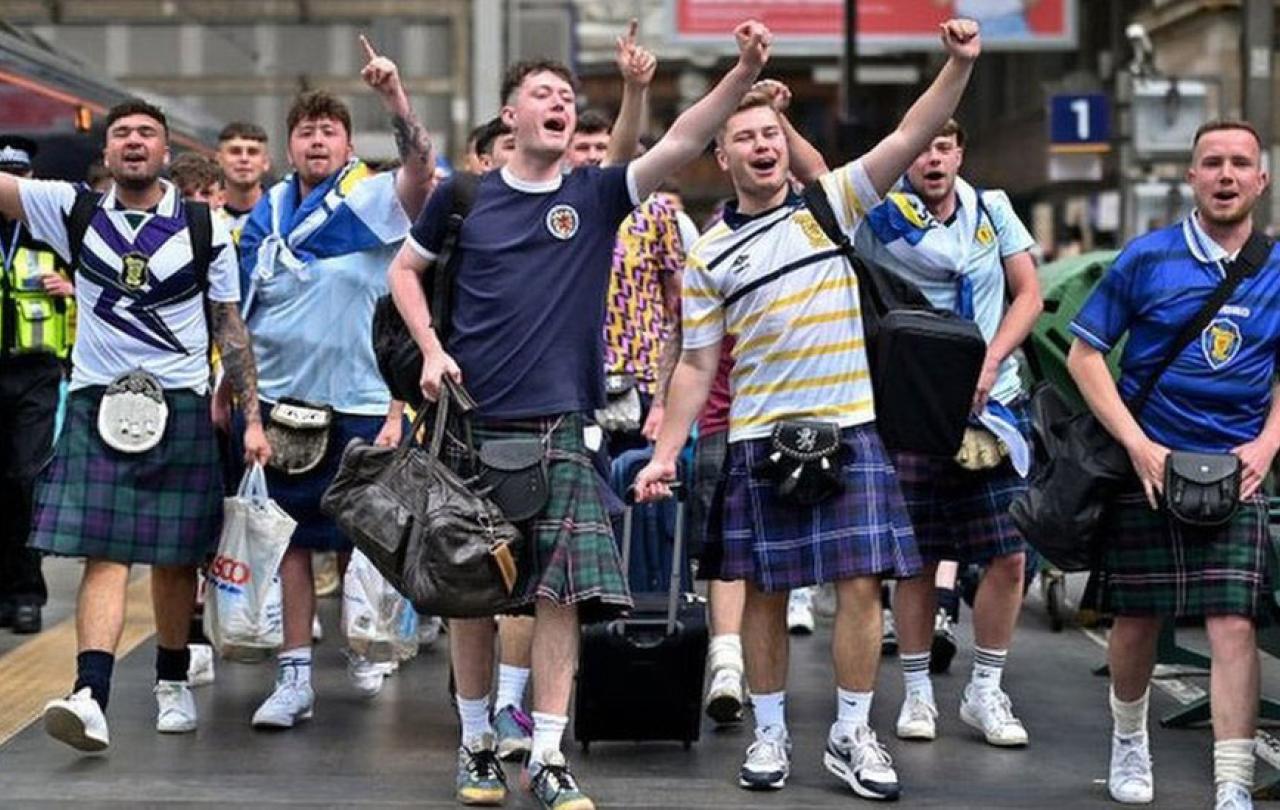
"A fat, sarcastic Star Trek fan: you must be a devil with the ladies."
This put down of Comic Book Guy in The Simpsons neatly sums up a prevailing attitude to fans. To be a committed fan is to devote yourself to a niche pastime; to be weird and nerdy and, simply, not cool. At its worst, the fan becomes a fanatic, from which the noun is derived; an obsessive who stalks the object of their passion online and, at its most dangerous, offline.
Times are changing, though, and the internet is chiefly responsible. Where once fans could feel isolated and able only to relate to fellow afficionados slowly via the postal system, now they can find people who share their love in a handful of clicks and build relationships in real time. A lot of anguish is spent on how the internet allows people to find extremist chat rooms where abhorrent behaviour is normalised; less attention is given to the wonder of being able to find fellow lovers online of Massey Ferguson tractors, Australian mullets or Rubik’s Cubes. Many fans feel less alone online, building a new sense of belonging and purpose – a realisation that others will take them seriously.
Yet experienced from the inside, a remarkable bonding is taking place, where fans not only fuse with others, but with the team itself.
In Fans: A Journey into the Psychology of Belonging (Picador, 2024), the academic Michael Bond gives a perceptive and generous insight into the world of fandom. There are Beliebers, Directioners, Trekkers, Swifties, Janeites, Ricardians. For the uninitiated, that’s lovers of Justin Bieber, One Direction, Star Trek, Taylor Swift, Jane Austen, Richard the Third; though strangely one of the biggest bases of all simply goes by the title Star Wars fans. Bond spends some time looking at the phenomenon of Michael Jackson. Professor Gayle Stever has researched the pop star’s fans and found them, like many other fans, to be ‘normal people carrying on normal lives with functioning relationships and jobs, who just had this passion for Michael Jackson’. Despite the discomfort of idolising a celebrity who lived, and died, with serious child abuse allegations made against him, they saw Jackson as ‘the target of racist abuse and unwarranted criticism throughout his career’.
Fans often identify very personally with their idols. Cosplaying conventions allow fans to reinvent themselves and Houston University studies have shown that people can ‘feel less lonely and less anxious in the face of rejection simply by thinking of a favourite TV show’.
But what of football fans? Many find the aggressive tribalism involved hard to accept. I have observed young male fans of London Premier League teams chanting loudly at train stations in a way that made young women nearby shrink away, making me wonder whether my opening line from The Simpsons ought to be re-purposed. The ritualised conduct of football crowds – the fist pumping, jumping and embracing at a goal, the verbal and hand abuse of opposing players and referees, and the chants that defy pre-match announcements about tolerance at games – can look bizarre and scary. Yet experienced from the inside, a remarkable bonding is taking place, where fans not only fuse with others, but with the team itself.
‘... the best of sport is not the earthy moment of victory, but the privilege of watching athletes tilt at divinity.’
The deeper the love for a club, the greater the joy and the pain at success and failure. It is a high-risk investment that many stake because it makes them feel so alive. The peerless interpreter of football fandom, Nick Hornby, says that football is a context where watching becomes doing’. Anyone whose leg has involuntarily jerked as a player reaches for the ball will grasp that.
I wonder if some football fans who identify as Christian struggle with the secret reality of uncontrollable mood swings every weekend? Should a win on a football pitch matter that much, when so many things are so much more important? They may aspire to the whimsy of Ecclesiastes (there is a time to win and a time to lose, the author nearly said) but feel the coursing testosterone of Samson instead.
God made us playful, and football is a disarmingly simple game to watch and play. There is also breathtaking beauty in the movements of its finest exponents, like the choreography of Michael Jackson himself. If we are called to life in all its fulness, isn’t this also a part of that fulness (even if some games are a stretch)?
In recent interviews, Nick Hornby has said he couldn’t write Fever Pitch again, his pained love letter to Arsenal FC; middle age has brought a new perspective. Writing in Prospect magazine (May 2024), sports journalist Emma John says: ‘I have observed many of my sports-loving friends follow the same trajectory…the best of sport is not the earthy moment of victory, but the privilege of watching athletes tilt at divinity’.
At least, until the final penalty shoot-out, when for the diehard fan it’s absolutely all about the earthly moment of victory.





